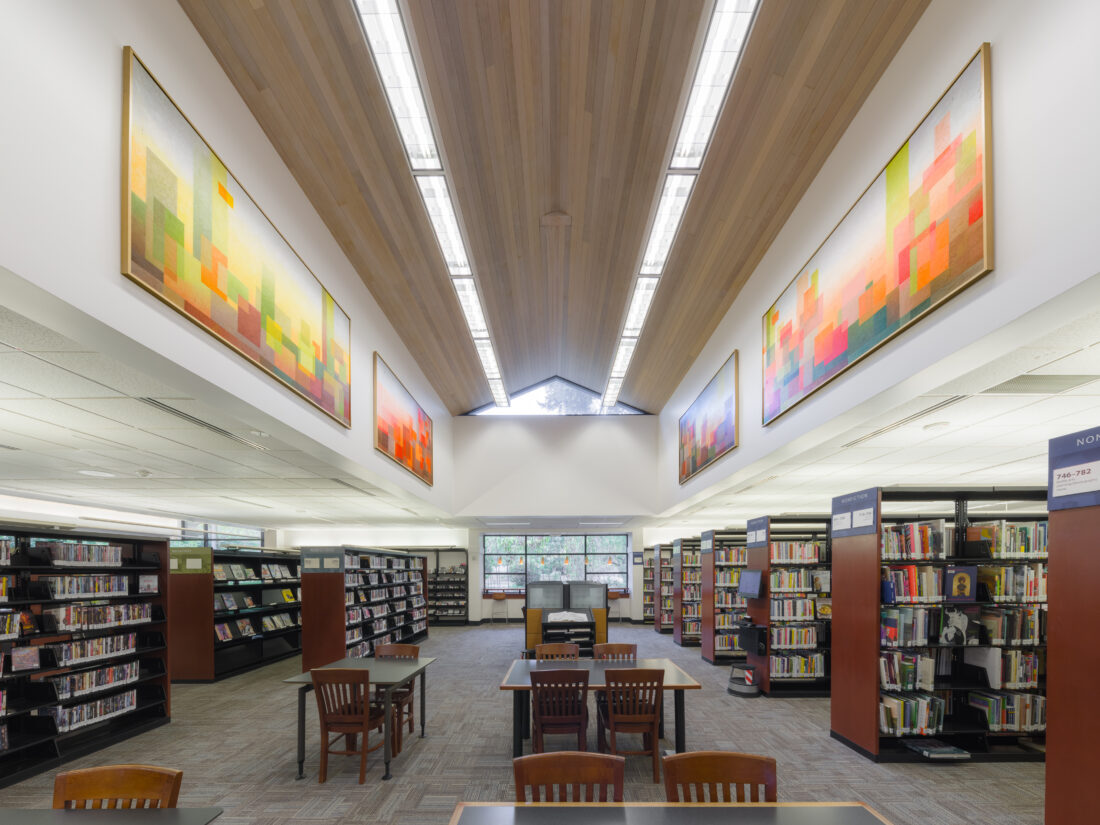Divided Sky, The Four Seasons, Wintry Sky
Maria Frank Abrams
Mercer Island Library
A Holocaust survivor forged an art career making paintings inspired by the Northwest.

Maria Frank Abrams came to Seattle in 1948 having survived 10 months in the Nazi concentration camp at Auschwitz between 1944 and 1945. When a scholarship from the Hillel Foundation brought her to the University of Washington to study art, the Northwest immediately began to affect her.
“In just a few months, I was responding to the landscape and this light,” she told Seattle Weekly in 2002. “It was very consoling, like a healing process … I began creating things that were harmonious and peaceful. That was my desire—for life to be like that.”
A chance encounter led to a friendship with midcentury Seattle art icon Mark Tobey, who supported Abrams’ work and introduced her to Otto Seligman, at the time the premier local gallerist for Northwest artists. Seligman represented her from 1953 until his death in 1966.
Abrams’ paintings are largely abstracted landscapes that reflect her exceptional perception of light and color. These three works—Divided Sky, The Four Seasons, Wintry Sky—also demonstrate her persistent interest in the seasons and what she called “the rhythm and changes of the day.” The Four Seasons, a four-canvas mural installed at the Mercer Island Library, features rectangular forms that suggest a cityscape in fall, winter, spring, and summer.
Continue Reading ›
Of Wintry Sky, on view at King Street Center, the artist said in 1986, “Coming home after a long walk in the park on a stormy January day I saw this sky... I believe I captured the glow of the sun which broke through only to rapidly vanish into the dark, velvety clouds above the richly textured land." The luminescence of Divided Sky , on view at Harborview Medical Center, similarly transforms Abrams’ view of the sky at twilight.
Born Marika Frank in Debrecen, Hungary, Adams (1924–2013) exhibited her work widely, both nationally and internationally. A longtime resident of Mercer Island, she participated in the Governor's Invitational Exhibition in 1966 and 1975, and won one of the first four King County Arts Commission awards in 1976. She also worked as an accomplished set and costume designer, creating designs that included the sets for Seattle Opera’s first production of La Traviata in 1963.
